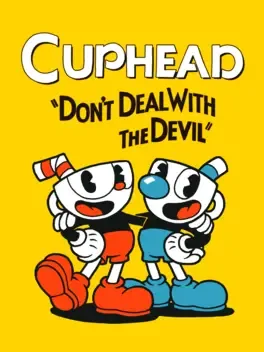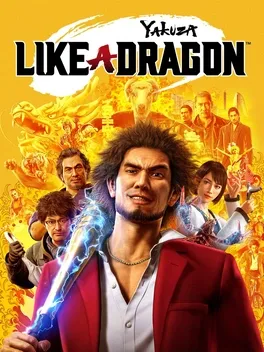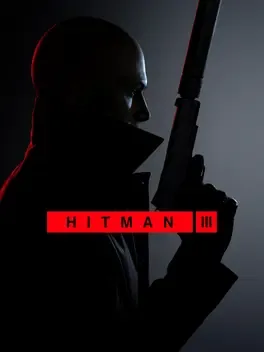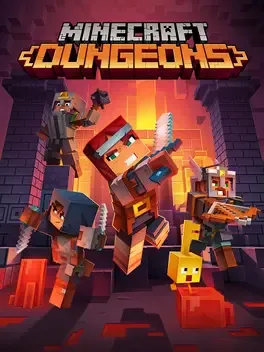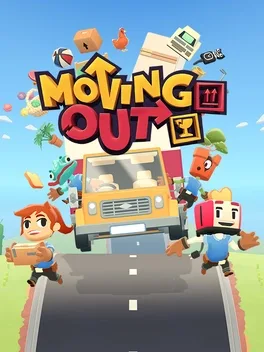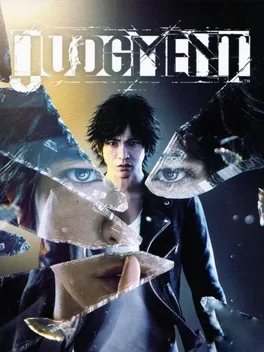Jeff Cork
This author account hasn't been claimed yet. To claim this account, please contact the outlet owner to request access.
Writing For
Latest Reviews
Cuphead made me shout obscenities at a flower. Its cheerful dragon tempted me to head-butt my television. And the candy princess? Oh, you don’t even want to know. I didn’t appreciate it until much later, but those early maddening hours with Studio MDHR’s run-and-gun platformer were like a kiln, hardening my skills and turning me into the best damned Cuphead player that I could be. That trial by fire is ultimately one of the most satisfying parts of the overall experience, but players who just want to enjoy its unique aesthetic are going to get burned.
Yakuza 6 marked the end of protagonist Kazuma Kiryu’s journey, leaving us with a single question: “What now?” For years, players had explored Japan with Kiryu, becoming attached to the character as well as the template that his games inhabited. Ryu Ga Gotoku Studio could have simply dropped a new face in Kamurocho and called it a day, but that’s not what happened. In Yakuza: Like a Dragon, the studio raised eyebrows by scrapping the traditional arcade-brawler combat and replacing it with turn-based RPG-inspired battles. And while there is a new face to the action, he’s accompanied throughout his adventure in Yokohama with a rotating troupe of like-minded heroes. It’s a pivot that could have ended in disaster. Fortunately, Like a Dragon’s bold gamble pays off, leading to one of the best entries to date.
Agent 47 has been an arbiter of death for decades now, using his finely honed skillset in a variety of dirty business around the world. With Hitman 3, his World of Assassination trilogy comes to its inevitably bloody end. Over these three games, IO Interactive boldly set out to create a seamless Hitman experience that felt consistent, from the tutorial mission to the conclusion. After playing through this stunning finale, I’m relieved that the studio stuck the landing. Every mission in the final arc is a statement, demonstrating a mastery of level design and a darkly playful willingness to subvert expectations laid out five years ago. Hitman 3 is not a good place to begin your Hitman journey, but it’s a satisfying way to say goodbye.
Sackboy has proven to be a character who’s pretty much up for whatever, including his starring role in the LittleBigPlanet series, a kart-riding spin-off, and even an appearance as a fighter in PlayStation All-Stars Battle Royale. In Sackboy: A Big adventure, the character brings his blank-slate appeal to a 3D platformer. Sure, he’s been jumping, punching, and throwing his way across hand-crafted worlds since his inception, but almost always with an eye toward tutorializing user-creation tools. Freed of those responsibilities, Sackboy – and players – can simply kick back and enjoy the action in another family-friendly showcase.
Minecraft Dungeons is a roller-coaster ride of an action/RPG, giving new players a fairly deep representation of the genre while providing veterans a nice diversion from traditionally grimdark trappings. Minecraft’s familiar world, tools, and other elements seamlessly make the transition from the mainline series. Its suite of enemies is a natural fit for this type of game, and Mojang introduces new members of the menagerie to fill out a few missing archetypes. Unfortunately, Minecraft Dungeons’ padded-out midgame is repetitive even among its grind-heavy peers. The first big drop in this ride had me screaming, but it wasn’t from exhilaration.
If you’ve moved (or helped people move) at any point during the past few decades, odds are you’ve heard someone make a joke about their Tetris skills paying off. There’s something satisfying about finding the perfect spot for a box or arranging things to fit into what seems like an impossibly small space. That sensation is part of what Moving Out promises; as a member of a furniture-moving company, you and up to three co-op buddies are tasked with filling up the truck as quickly and efficiently as possible. Moves get more complicated and sillier over time, but ghosts, flamethrowers, and rising pools of guava juice prove to be far from the biggest obstacles to success.
Designer Keita Takahashi exploded our consciousness in the PlayStation 2 era with the release of Katamari Damacy. He may not be the most prolific creator out there, but his creations are memorable for both their simple aesthetics and strange, almost alien gameplay conceits. Is rolling a giant, sticky ball around enjoyable? Sure! And even if I didn’t ultimately understand the point of Katamary Damacy’s follow up, Noby Noby Boy, stretching my character around its colorful world was fun for a while. Wattam offers more structure than some of his more out-there experiments while still encouraging players to explore and poke around to see what they can discover.
The Blair Witch movie franchise started out strong, with the release of The Blair Witch Project. The pseudo-documentary became a cultural touchstone, with a companion website and TV special stoking the belief that the tale of three missing college students may have actually happened. A pair of follow-ups failed to capture the magic of that initial found-footage phenomena, because it’s tricky to pin down what exactly that magic is. Bloober Team takes a crack at it with its own Blair Witch game, telling an original story while tapping into the few common elements that the films share. The main character, Ellis, is a former soldier and police officer, but he’s just as susceptible as anyone when it comes to getting lost in the woods near Burkittsville.
The original Dragon Quest Builders took Minecraft to the workbench and bolted on some much-appreciated structure to the building experience. Despite a repetitive formula, it was an enjoyable playground for those of us who enjoy freeform Lego construction but keep the instructions off to the side just in case. Now Omega Force and Square Enix are back with a hefty sequel that improves virtually every aspect of that original blueprint.
Kamurocho is no stranger to violence, but a recent series of murders is unsettling even for the crime-riddled Tokyo neighborhood. In a particularly gruesome calling card, the killer gouges out the eyes of his victims. Thankfully, Takayuki Yagami is on the case. An attorney-turned-detective, he has the credentials and tenacity to bring justice where it’s needed – no matter how far the investigation may take him. His methods might get results, but they’re ultimately overshadowed by the strong story and engaging world-building.
